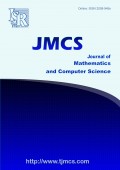Comparing Fuzzy Charts with Probability Charts and Using Them in a Textile Company
-
2675
Downloads
-
4529
Views
Authors
Hamid Reza Feili
- Assistant Professor, Industrial Engineering, Alzahra University
Pooyan Fekraty
- B. S., Industrial Engineering, K. N. T. University
Abstract
In this article it has been tried to show that fuzzy theory performs better than probability theory in monitoring the product quality. A method that uses statistical techniques to monitor and control product quality is called statistical process control (SPC), where control charts are test tools frequently used for monitoring the manufacturing process. In this study, statistical quality control and the fuzzy set theory are aimed to combine. As known, fuzzy sets and fuzzy logic are powerful mathematical tools for modeling uncertain systems in industry, nature and humanity; and facilitators for common-sense reasoning in decision making in the absence of complete and precise information. In this basis for a textile firm for monitoring the yarn quality, control charts according to fuzzy theory by considering the quality in terms of grades of conformance as opposed to absolute conformance and nonconformance. And then with the same data for a textile factory, the control chart based on probability theory is constructed. The results of control charts based on two different approaches are compared. It’s seen that fuzzy theory performs better than probability theory in monitoring the product quality.
Share and Cite
ISRP Style
Hamid Reza Feili, Pooyan Fekraty, Comparing Fuzzy Charts with Probability Charts and Using Them in a Textile Company, Journal of Mathematics and Computer Science, 1 (2010), no. 4, 258--272
AMA Style
Feili Hamid Reza, Fekraty Pooyan, Comparing Fuzzy Charts with Probability Charts and Using Them in a Textile Company. J Math Comput SCI-JM. (2010); 1(4):258--272
Chicago/Turabian Style
Feili, Hamid Reza, Fekraty, Pooyan. " Comparing Fuzzy Charts with Probability Charts and Using Them in a Textile Company." Journal of Mathematics and Computer Science, 1, no. 4 (2010): 258--272
Keywords
- Quality Control Charts
- Fuzzy Set Theory
- Fuzzy Control Charts
- Statistical Process Control
- Textile
MSC
References
-
[1]
D. R. Anderson, D. J. Sweeney, T. A. Williams , Statistics for business and economics, West Publishing Company, St. Paul (1996)
-
[2]
M. Y. Bayrak, N. Celebi, H. Taşkin, A fuzzy approach method for supplier selection, Production Planning and Control, 18 (2007), 54--63
-
[3]
M. L. Berenson, D. M. Levine, Basic business statistics, Prentice Hall, New Jersey (1999)
-
[4]
G. Bojadziev, M. Bojadziev, Fuzzy sets, fuzzy logic, applications, World Scientific, London (1991)
-
[5]
C. W. Bradshaw, A fuzzy set theoretic interpretation of economic control limits, Eur. J. Oper. Res., 13 (1983), 403--408
-
[6]
C. Cheng, Fuzzy process control: Construction of control charts with fuzzy numbers, Fuzzy Sets and Systems, 154 (2005), 287--303
-
[7]
I. Ertuğrul, Toplam kalite kontrol ve teknikleri, Ekin Kitabevi, Turkey (2004)
-
[8]
F. Franceschini, D. Romano, Control chart for linguistic variables: A method based on the use of linguistic quantifiers, Int. J. Prod. Res., 37 (1999), 3791--3801
-
[9]
F. Franceschini, M. Galetto, M. Varetto, Ordered samples control charts for ordinal variables, Qual. Reliab. Eng. Int., 21 (2005), 177--195
-
[10]
A. L. Guiffrida, R. Nagi, Fuzzy set theory application in production management research: A literature survey, J. Intell. Manuf., 9 (1998), 39--56
-
[11]
M. Gülbay, C. Kahraman, D. Ruan, α-cut fuzzy control charts for linguistic data, International Journal of Intelligent Systems, 19 (2004), 1173--1195
-
[12]
M. Gülbay, C. Kahraman, An alternative approach to fuzzy control charts: Direct fuzzy approach, Information Sciences, 177 (2007), 1463--1480
-
[13]
C. Kahraman, E. Tolga, Z. Ulukan, Using triangular fuzzy numbers in the tests of control charts for unnatural patterns, Proceedings of INRIA/IEEE conference on emerging technologies and factory automation , 1995 (1995), 291--298
-
[14]
A. Kanagawa, F. Tamaki, H. Ohta, Control charts for process average and variability based on linguistic data, Int. J. Prod. Res., 31 (1993), 913--922
-
[15]
A. Kandel, Fuzzy mathematical techniques with applications, Addison-Wesley Publishing Company, Boston (1986)
-
[16]
A. de Korvin, M. F. Shipley, Sample size: Achieving quality and reducing financial loss, International Journal of Quality & Reliability Management, 18 (2001), 678--691
-
[17]
L. J. Krajewski, L. P. Ritzman, Operations management: strategy and analysis, Addison-Wesley Publishing Company, Glenview (1998)
-
[18]
J. S. Martinich, Production and operations management: An applied modern approach, Wiley, U.S.A. (1997)
-
[19]
D. C. Montgomery, Introduction to statistical quality control, Wiley, New York (1991)
-
[20]
T. Raz, J. H. Wang, Probabilistic andmembership approaches in the construction of control charts for linguistic data, Production Planning & Control, 1 (1990), 147--157
-
[21]
H. Rowlands, L. R. Wang, An approach of fuzzy logic evaluation and control in SPC, Qual. Reliab. Eng. Int., 16 (2000), 91--98
-
[22]
W. Stevenson, Production/operation management, Homewood, Irwin (1993)
-
[23]
H. Taleb, M. Limam, On fuzzy and probabilistic control charts, Int. J. Prod. Res., 40 (2002), 2849--2863
-
[24]
H. Taleb, M. Limam, Fuzzy multinominal control charts, 9th Congress of the Italian Association for Artificial Intelligence, 2005 (2005), 553--563
-
[25]
R. C. Wang, C. H. Chen, Economic statistical np control chart designs based on fuzzy optimization, International Journal of Quality & Reliability Management, 12 (1995), 82--92
-
[26]
J. H. Wang, T. Raz, On the construction of control charts using linguistic variables, Int. J. Prod. Res., 28 (1990), 477--487
-
[27]
J. Yen, R. Langari, Fuzzy logic, intelligence, control and information, Prentice Hall, New Jersey (1999)
-
[28]
L. A. Zadeh, J. Kacprzyk, Fuzzy logic for the management of uncertainty, Wiley, New York (1992)

